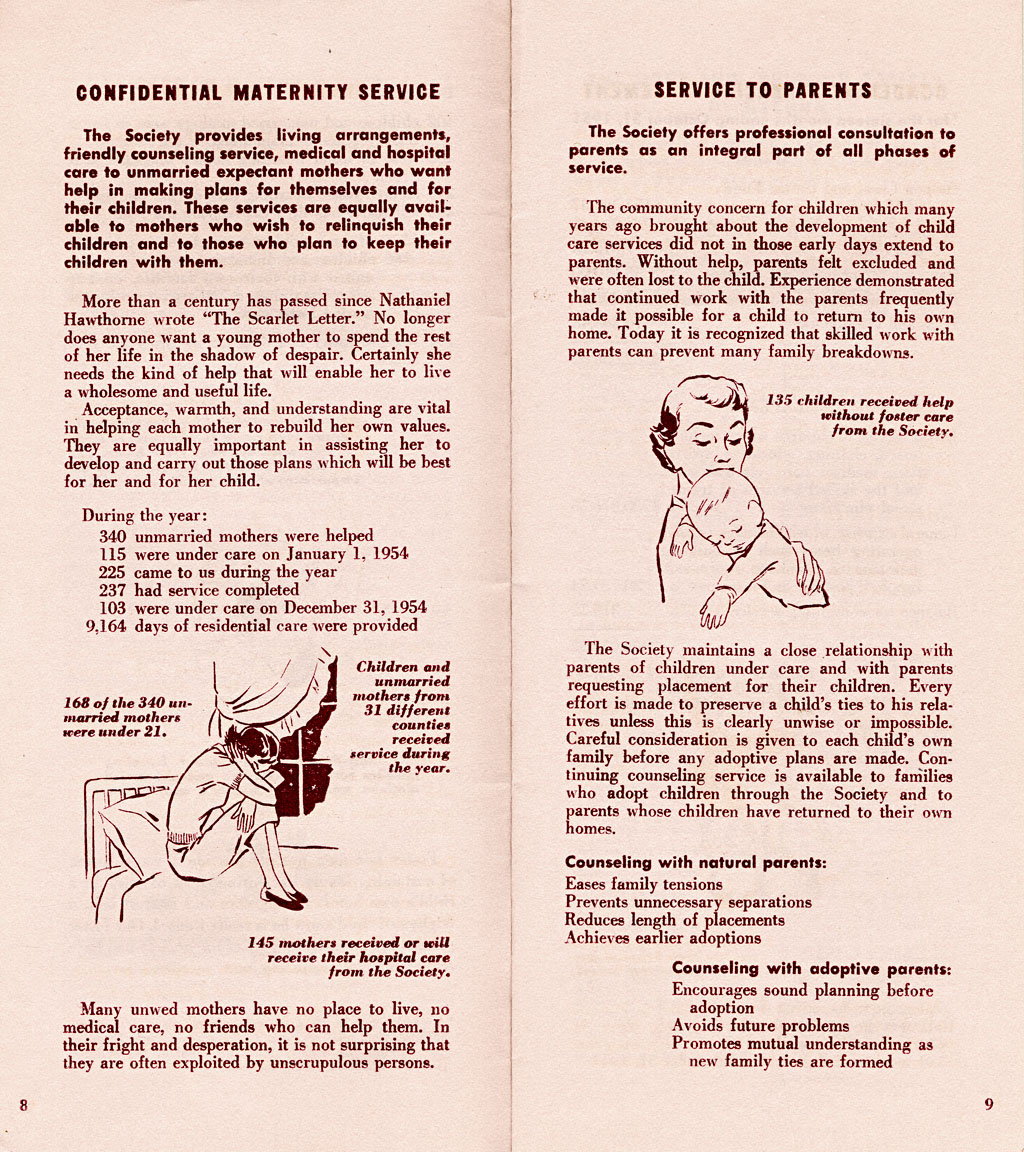- Catalog No. —
- Mss 1511-2
- Date —
- 1954
- Era —
- None
- Themes —
- Government, Law, and Politics
- Credits —
- Oregon Historical Society
- Regions —
- None
- Author —
- Boys and Girls Aid Society of Oregon
Boys and Girls Aid Society of Oregon Report
This 1954 annual report of the Boys and Girls Aid Society of Oregon highlights the services that the charitable organization offered that year. Pages eight and nine, shown here, illustrate that in 1954 the organization approached the problem of helping children from the perspective of helping entire families.
Wealthy Portlanders organized the Boys and Girls Aid Society of Oregon in 1885 to care for the homeless, neglected, and abused children of the state. The organization specialized in the process of “placing out,” in which the Society’s agents placed dependent children with families. The Society also cared for children waiting for placements within a large “Receiving Home.” Since its earliest years, the Society touted the safe and healthy living arrangements for children in its care, highlighting the careful work of its agents.
By the 1950s the Society’s services had expanded. Page eight of this annual report promised compassionate support and medical care for expectant mothers. It draws attention to the Society’s objective of being undiscriminating in its charity—it notes that approximately half of the single mothers that the Society helped were under twenty-one and that children and mothers in its care represented thirty-one different countries.
Page nine emphasized the Society’s counseling services. Skilled professionals at the Society in 1954 worked with troubled parents to improve the chances that children could remain with their biological parents. The Society offered help to adoptive parents also, maintaining that planning and mutual understanding were necessary for successful adoptions.
The Society’s annual reports during the mid-twentieth century stressed the organization’s professionalism. The 1940-1941 report, for example, boasted its acceptance into the Child Welfare League of America and claimed that the Boys and Girls Aid Society of Oregon was the state’s first agency to meet the league’s national standards.
The approach to charity exhibited in this report was a departure from the organization’s earlier methods and reflected evolving ideas about social work as the discipline professionalized during the twentieth century. The Society’s earliest agents assumed that irresponsible parents, hardened by a life of poverty, were unlikely to be reformed. In contrast, the Society’s social workers in the 1950s sought to work with any family member who wanted help. The later workers believed that their training and advice could benefit existing and newly forming families, regardless of the families’ racial or class background.
Further Reading:
Boys and Girls Aid Society of Oregon. Annual Report. Portland, Oreg. 1940-1941.
Holt, Marilyn Irvin Holt. The Orphan Trains: Placing-out in America. Lincoln, Nebr., 1992.
Written by Sara Paulson, © Oregon Historical Society, 2006.
